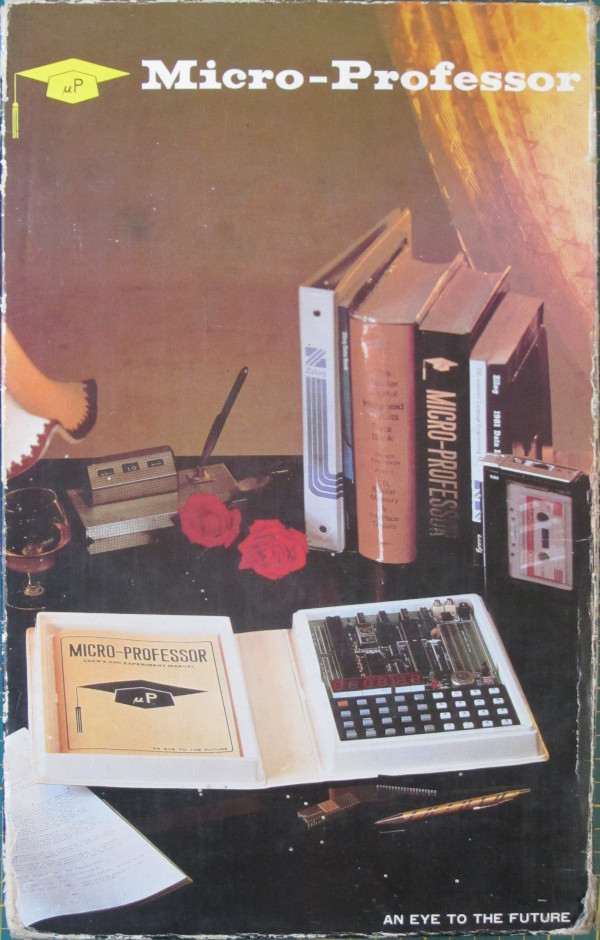Multitech also provided extra boards which fitted nicely in the left side of the box, being connected with the 40-pin header at the top left of the main board, this being essentially the Z80 processor pinout, minus the +5V, as each board came with its own mains adapter. Most boards were half the height of the MPF-1, so in theory two board could be placed in the box. Most boards had an extra header, allowing daisy chaining. From the box:
| Here in one attractive package is a Z80*
based microcomputer to lead you step by step to a thourough knowledge of the world of
microprocessors. The Micro-Professor is a complete hardware and software system whose extensive teaching manual gives you detailed schematics and examples of program code. A superb learning tool for students, hobbyists |
and microprocessor enthusiasts, as well as an excellent
teaching aid for instructors of electrical engineering and computer science courses. But the Micro-Professor is much more than a teaching device. With it you can do bread-boarding and prototyping, design your own custom hardware and software applications with Z80, 8080 and 8085 compatible code. |
The standard 2K bytes of RAM is expandable to 4K, and the
standard 2K bytes of ROM can be increased to 8K. All this plus a build-in speaker, a cassette interface, and sockets to accept optional CTC/PIO. Bus is extendable. As wel as being an exciting learning tool , the Micro-Professor is a great low-cost board for OEM's. Z80 is a trademark of Zilog Inc. |

This was the smallest expansion set, consisting of an empty experiment board, a flatcable to connect it to the MPF-1, the Z80-PIO and Z80-CTC and two chips for the U7 socket; a 2 kByte RAM and a 4 kByte EPROM (blank). You needed the EPB-MPF or another programmer to program the latter.
The U7 socket could be configured with JUMPER1 on the MPF-1(B) for either EPROM or RAM. The default is for a 2516, 2716 or 2532 EPROM. Changes are required for a 2732 EPROM of 6116 RAM. See Page 35 of the manual or the J1 description on the modifications page.
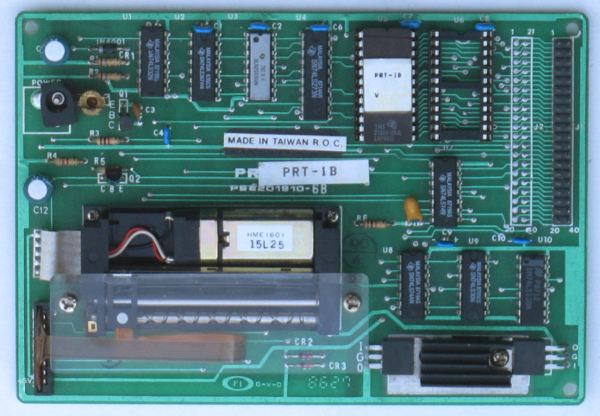
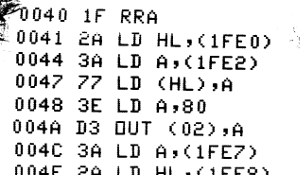
There were al least two ROM versions of the printer, one for the MPF-IB and one for the MPF-IP.
The PRT-MPF-IB ROM contains:
- a printer driver utility (65ACh),
- a Z80-disassembler listing utility (6000h), (see listing)
- a Memory dump utility (6300h),
- a BASIC program listing utility (6400h) and
- a Printer line feed (6500h).
This revision of the board has an extra driver transisor, a Darlington (MPSA13) to drive the motor. The original schema used a port in U3 (ULN2803A) for this. The extra transistor is very placed in the paper inlet path, very inconvenient. The PRT-MPF-IP manual has schematics for three variants of the power supply. PCB versions 1 and 2 had one 7805, PCB versions 3 and 4 had two regulators and PCB versions 5 and6 added zener diodes to both 5 volt rails. Probably to suppress transients of the motor operations. The imaged board is Version 6.
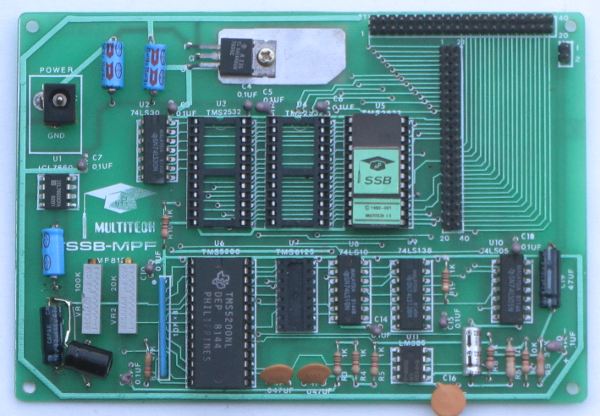
Texas Instruments used related chips in the "Speech & Spell" modules for children.
These are the words provided in the standard ROM, just enough for the talking clock demo: ONE, TWO, THREE, FOUR, FIVE, SIX, SEVEN, EIGHT, NINE, TEN, ELEVEN, TWELVE, THIRTEEN, FOURTEEN, FIFTEEN, SIXTEEN, SEVENTEEN, EIGHTEEN, NINETEEN, TWENTY, THIRTY, FORTY, FIFTY, IT, IS, AM, PM, OCLOCK, OH, GOOD, MORNING, AFTERNOON

Note there are two EPROM programming boards, one for the 1B and one for the 1B and 1P.
The EPB-MPF-1BP User's Manual lists these EPROMS the board and firmware is cabable of programming:
| 1K x 8 | 2K x 8 | 4K x 8 | 8K x 8 |
| TMS2708, | TMS2516, | TMS2732 | 2564 |
| I2758, | I2716 | I2732 | 2764 |
There are three sockets for 2K x 8 bytes RAM, so programming the 8 K byte EPROMs, had to be done in two parts.
The two boards differ on the memory and I/O-port range.
The EPB-MPF EPROM Programmer Board Operating Manual says:
ROM: 9000h-97FFh, RAM: 8000h-8FFFh, 8255 I/O: CCh-CFh
The EPB-MPF-1BP User's Manual mentions:
ROM: 9000h-9FFFh, RAM: D800h - EFFFh, 8255 I/O: 70h-7Fh.
The EPB-MPF-1BP might not work with an unmodified 1(B) as long as the CTC is present.
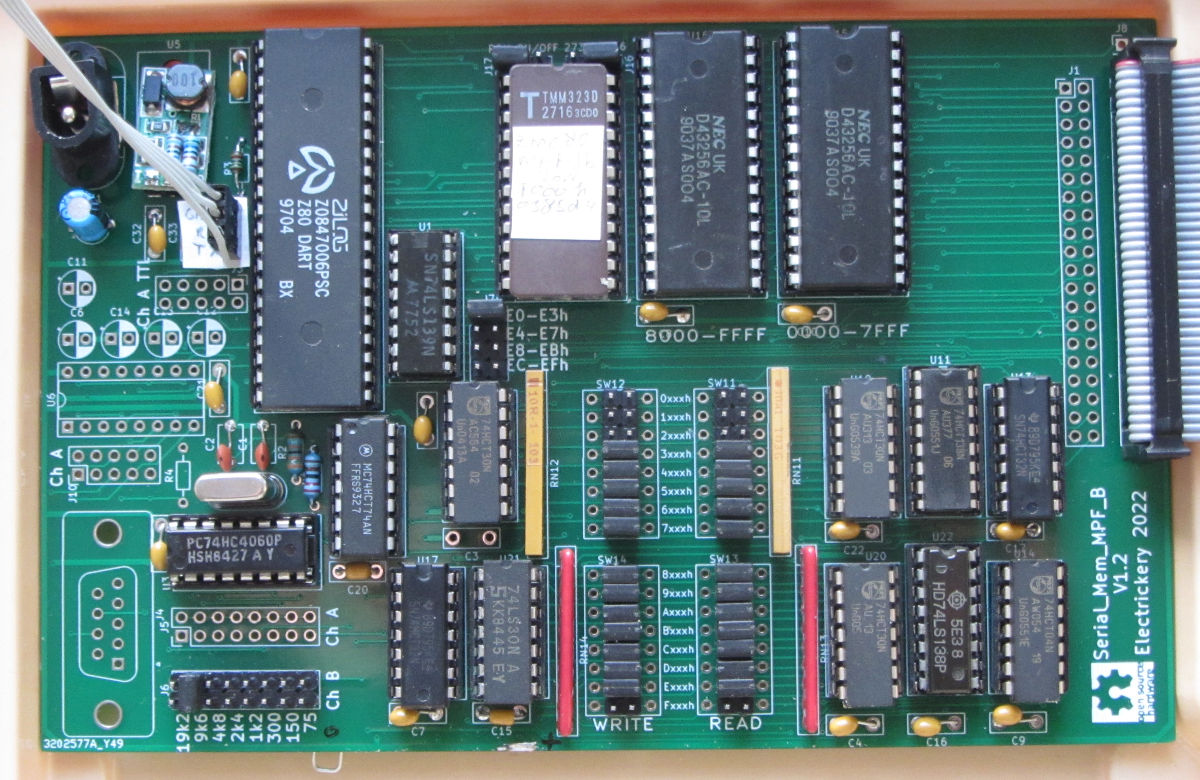
It is a self made extension with a dual serial port and switchable memory. More info on a separate page
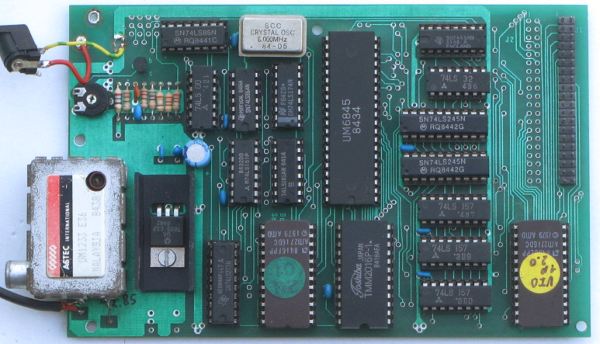
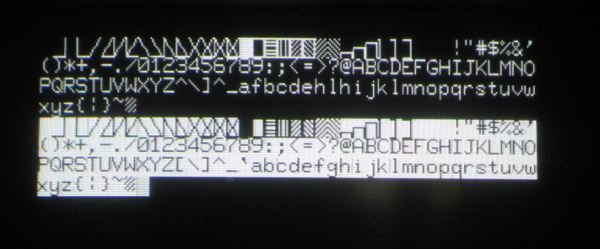
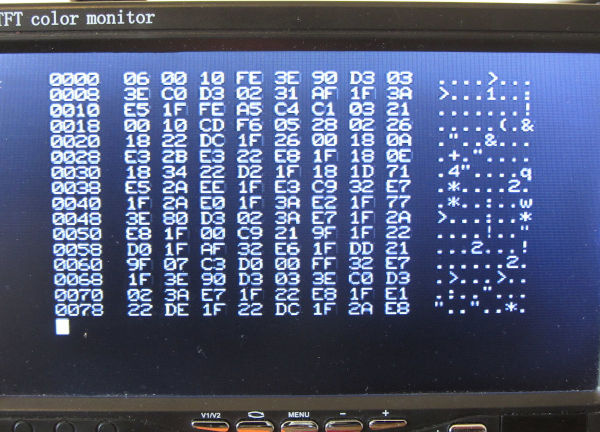
This uses an MC6845 CRT controller and generates a 40 x 20 video signal, that isn't quite PAL compatible. Not a problem for the old vacuum tube analog monitors, but modern TFT-displays want something more standard.
There are at least two versions of this board; the original with the EPROM at 0800h-0FFFh and RAM at 3000h-37FFh, and a newer version with EPROM at A000h-A7FFh and RAM at 4000h-47FFh. For the original version the monitor ROM on the MPF-1 was exchanged by a combined monitor (0000-07FFh) / VIDMON ROM (0800-0FFFh). But the later MPF-1B had a monitor / Tiny-Basic ROM. So the VIDMON ROM was relocated to A000h-A7FFh.
Useful routines for version 2.0 and up:
- A000h - Clear screen (v2.2 only)
- A004h - init 6845, clear screen, return from call
- A007h - init 6845, clear screen, jump to 0000h
- A00Ah - (JCRTCO) print character in C, interpret control codes
- A00Dh - (JCRTOU) print character in C, print codes 00h-31h too
- A010h - (JTEXCO) print 00h terminated string (start in IY)
- A013h - (JTEX??) print 00h terminated string (start in IY) CR = LF
- A016h - writes character set to screen
- A019h - configure 6845 with register/data table in HL (FFh terminated)
- A01Ch - Print copyright banner (v2.2 only)
- A01Fh - dump 80h bytes of memory hex/ascii (v2.2 only)
The character set image is the result of the key sequence: [ADDR], A, 0, 0, 7, [GO], [ADDR], A, 0, 1, 6, [GO].
The 2.0 ROM has a deliberate routine to replace every printed [`afg by afhi^. Why is a mystery to me.
The manual for version 1.0 is at the Virtual library. A modified ROM is also available here fixing the character mangling.
PAL video signal
The 2.0 monitor produces a signal close to PAL, but not close enough for some modern flatscreen monitors. The 2.1 version fixes this, but you may want to experiment with the 6845 timing registers.
One way to use it is to copy the data from the ROM in the range a49dh-a4c1h to RAM, modify the even values, load the start address in HL and jump to A019h.
Annotating the disassembly and adding features is a work in progress at: github.
There is now a remake of the VIO-MPF-I!
Bardhele Electronics offered other extensions for the MPF-I:
- LIAS
- An assembler/disassembler that used the video card
- ECB Bus
- An adapter and backplane for the ECB bus
- ECB cards
- 32k memory expansion with RAM and/or EPROM, serial and parallel interfaces
- HARDEX1
- An hardware experimenting box with Z80 PIO, Z80 CTC, AD and DA converters, amplifier card, stepper motor control, digital voltage meter. This in a 'school-safe' construction, which is protected for inverse polarity and over voltage mistakes. All inputs and outputs used 2mm connections.
- SPS
- An extension to HARDEX1, a SPS (Speech) Interpreter following german standard DIN_19239DIN 19 239 A 04.81
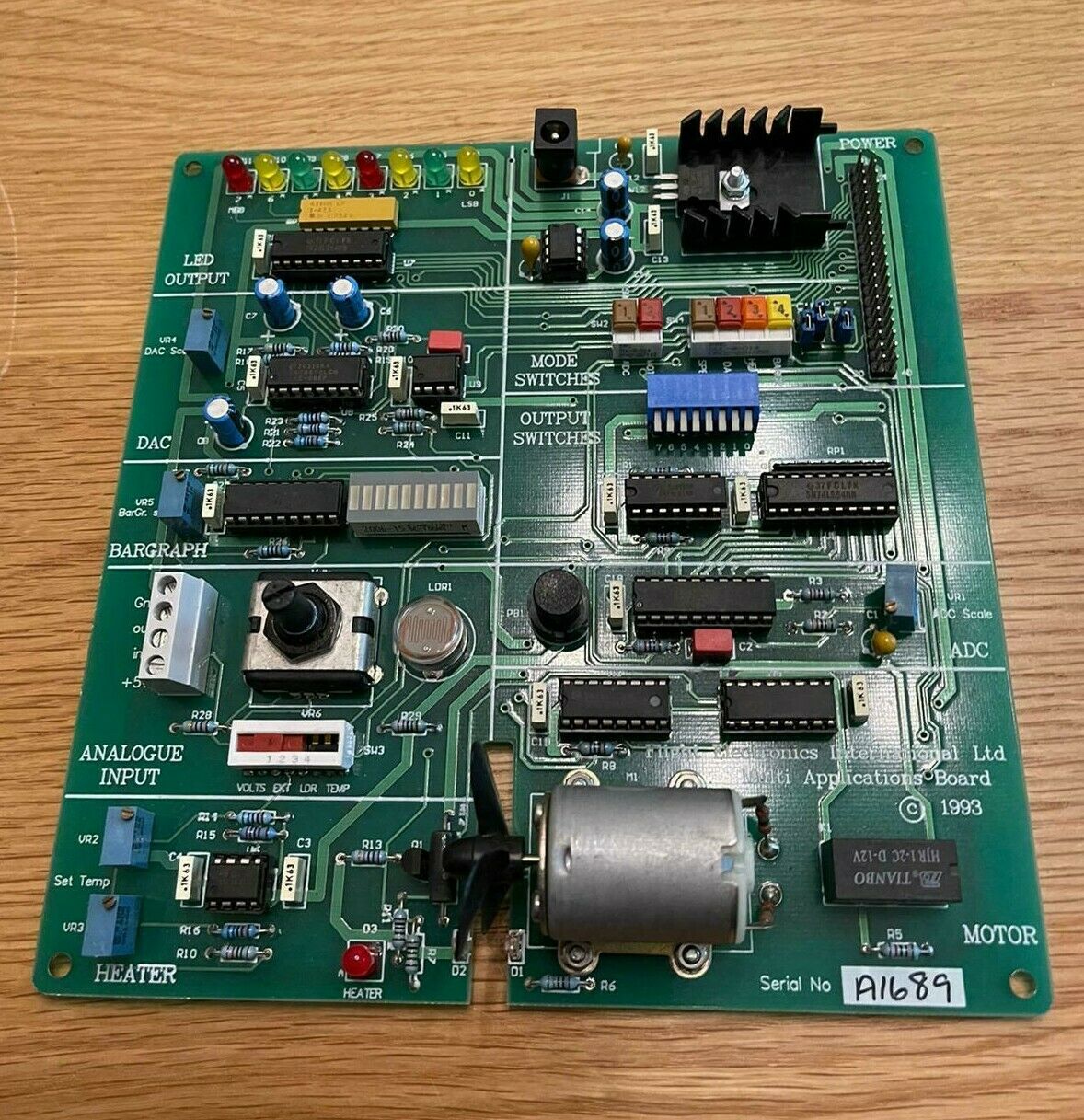
Multitech developed a Multi Application Board to extend the educational possibilities with the MPF-IB. This board should be attached to the P2 connector with PIO and CTC signals. Flite Electronics International later remade the board with an improved layout.
Some of the specifications:
- D/A Converter, type DAC0800
- digital input 00 hex, analogue output 0.00V
digital input 80 hex, analogue output 1.28V
digital input FF hex, analogue output 2.55V
settling time approx 100nS - Bargraph
- Full scale 2.55 V = approx 0.25V per segment.
- DC Motor
- Speed 0 to approx 8000 RPM
Current no load approx 180mA - Heater
- Temperature Range nominally 0 to 70C
Temperature sensor nominally 40mV/C (adjustable 1mV/C to 90mV/C) - Light Sensor
- output 0V to approx 2.5V
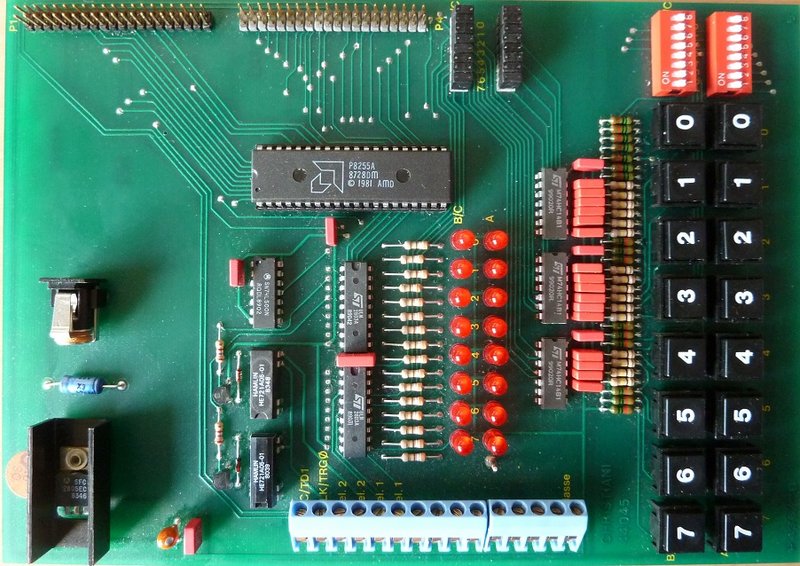
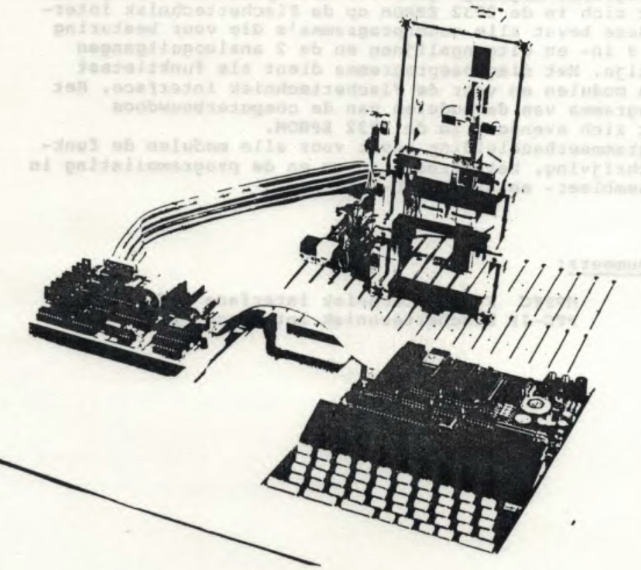
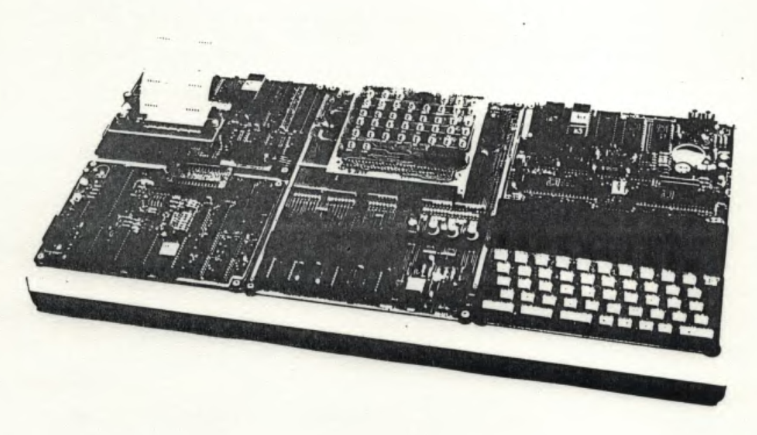
Sciento imported the MicroProfessor in the Netherlands (and Belgium?). They sold teaching materials to technical schools and technical high-schools. They also sold other third-party extensions like the interface for Fischertechnik motor modules and a so called Logic Analyzer (HWEX2), which made some internal CPU data visible. A kind of Blinkenlights for the MPF-1-line! The HWEX2 did this by monitoring the Z80-CPU bus.
There was also an "Microelectronics applications board" with inputs: 8 digital switch inputs, temperature sensor, optical encoder, light sensor, potentiometer and external analog input. Outputs: DC motor, 8 LEDs, heater, bargraph, analog output. An 'logic probe' was also included.
Another extension was a base (HWEX-OC) with wiring and power supply with room for a MPF-1B or Plus and four half height extensions.
The Fischertechnik interfaces (one for the MPF-1B and one for the MPF-1P) were 8255 based, could control four (stepper?) motors, have eight digital input lines and two analog inputs.
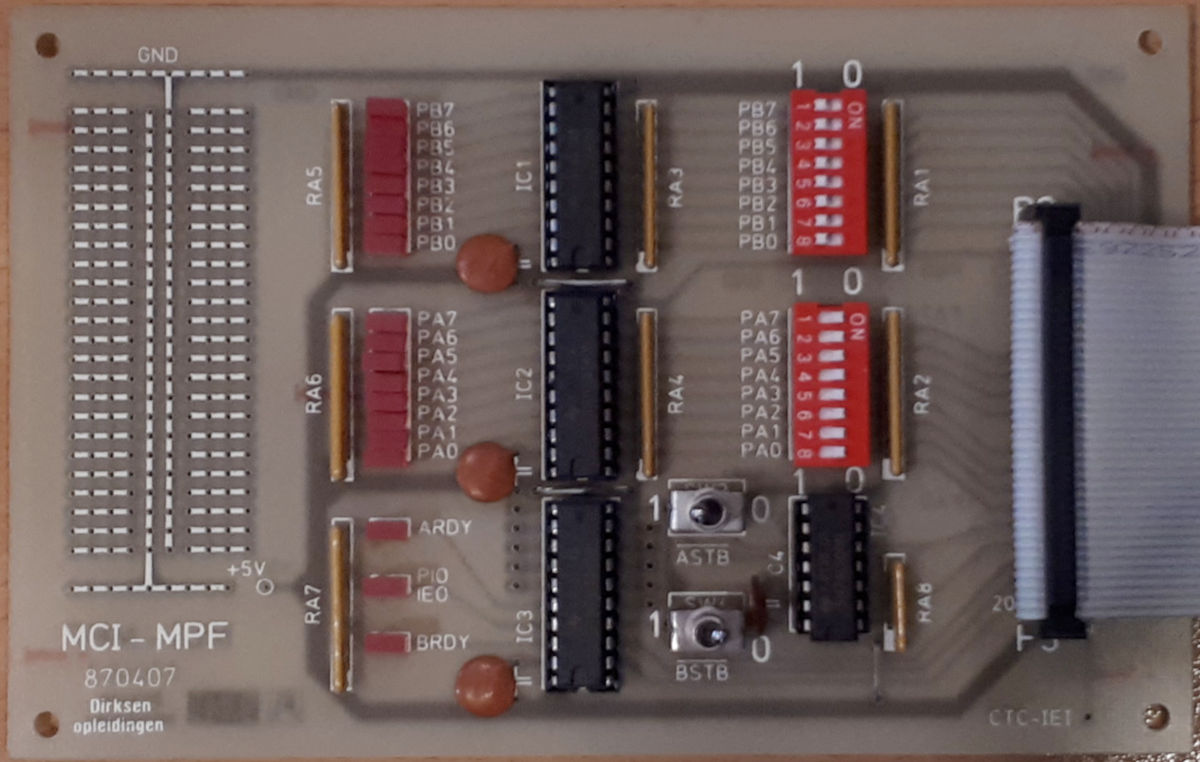
Source: HCC-Retro in Bilthoven, 2025-05-31
